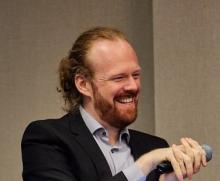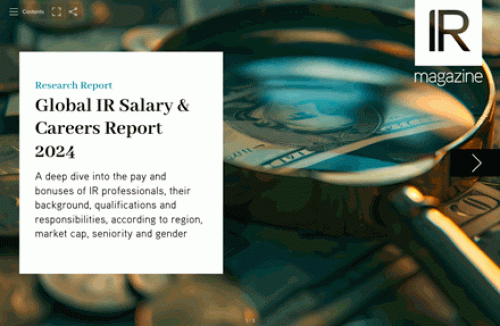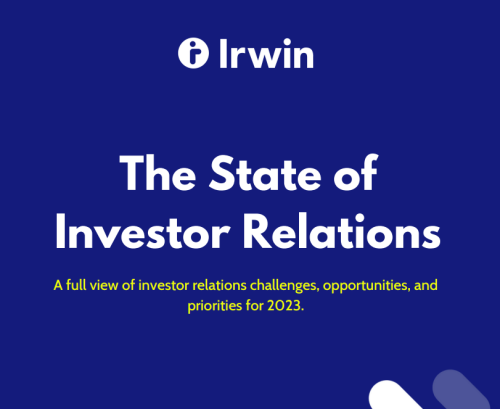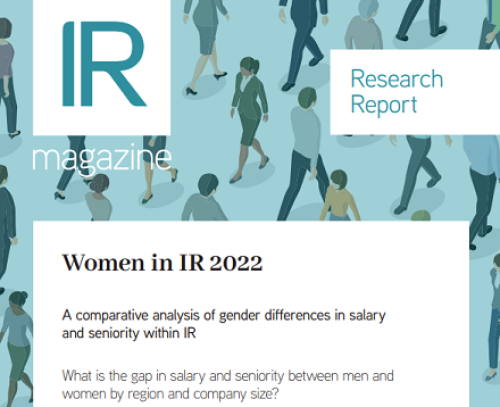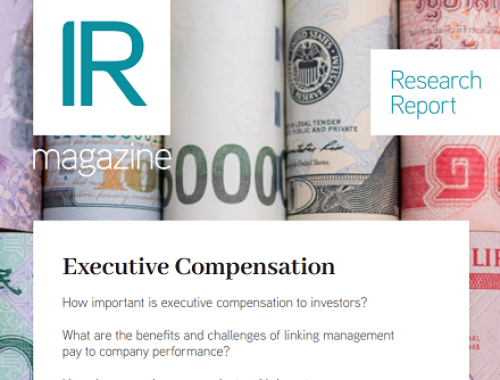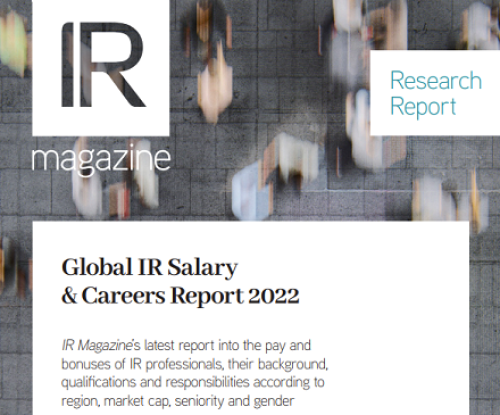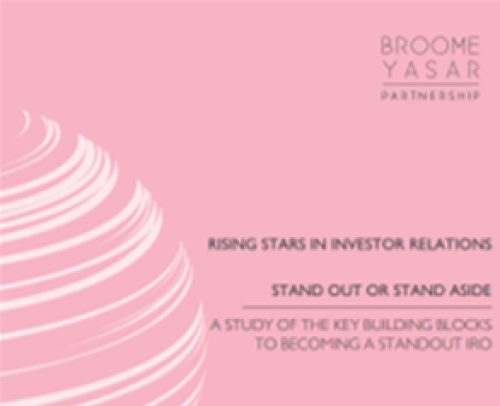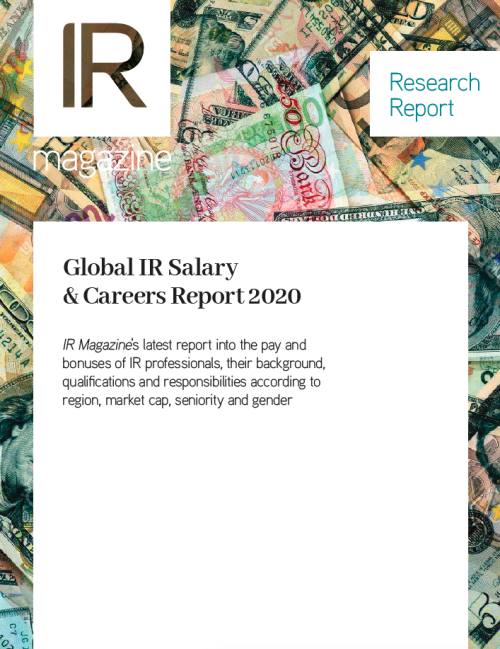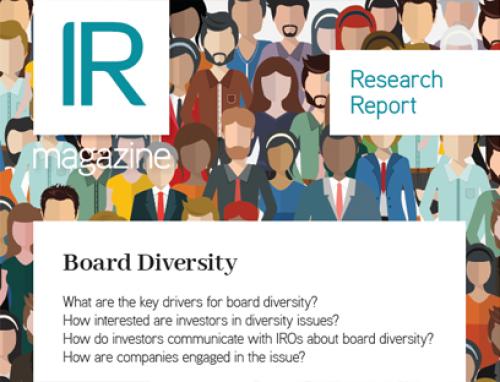Cisco's CMO discusses her career, the role of IR and how marketing to the public compares to reaching out to investors
It’s often said an extended stay in IR is the perfect developmental step in a career destined to finish in the C-suite. Not only do corporates recognize the value of the top-down, investor-centric view the function offers, but they also appreciate the opportunities it gives people to collaborate with executives.

'The exposure IR brought is a really fundamental part of how I built my own leadership'
Blair Christie, chief marketing officer, CISCOFor Blair Christie, Cisco’s senior vice president and chief marketing officer (CMO) and former head of IR and corporate communications, this is a view she plans to pass on. ‘Hands down, IR is the most strategic and greatest foundation for a career that anyone could ask for,’ she notes. ‘I consistently tell early-career folks or even interns that IR is a great way to jump into the business world. I have three kids and they’re into architecture, engineering and drama, but I’m going to make sure they think about IR as a career.’
Christie’s first taste of life as an IRO came during her final year at Drexel University while studying under a co-op program, which sends students to work in a related field for six months followed by six further months of study. The CEO of Philadelphia utilities company Aqua America – whom Christie describes as ‘pretty dynamic’ – gave her an opportunity to try out IR. ‘The company had a very attractive, income-oriented stock and the CEO was looking for a little more proactive marketing and engagement with investors,’ she recalls. ‘This was the mid-1990s, though, so IR as a role was only just becoming a more significant and formalized part of public companies’ efforts.’
Another opportunity at a local tech company followed, before an introduction through NIRI opened up a new path on the other side of the country in California. ‘I’d spoken to the head of IR at Cisco a few times in terms of mentoring and coaching, and it was she who offered me an interview,’ Christie says. ‘My first reaction was, ‘No thank you’: I’d just finished my MBA, gotten married and bought a home, and frankly I was ready to get a little more settled!’ A quick chat with her husband – as well as consultation with several of her NIRI Philadelphia peers, including Len Greihs, Lee Marshall and Nancy Kyle – and Christie felt keener to have an interview or at least a chat with Cisco. ‘And here we are 16 years later,’ she says.
Joining IR
Though Christie joined as one of an eight-person IR team, she rose quickly through the ranks to lead the function just a few years later. By 2000, with the internet bubble still intact, Cisco’s soaring stock price was one of the company’s best assets. ‘It helped us retain, train and develop talent and was a key part of our acquisitions,’ Christie explains. ‘Stock was our capital and the value of the stock was a critical element of how fast we could grow.’
But – of course – the bubble burst, sending Cisco’s share price plummeting from $80 to $9 over the course of a few months, losing the company several hundred billion dollars in market cap.
‘The IR team took on a huge role as advocate, translator and influencer between the investors and Cisco itself,’ says Christie, adding that she was aided by having a leadership team that was extremely open to talking to and engaging with investors. ‘The leadership never hid during hard times,’ she continues. ‘In fact, at such times it was even more proactive and engaged with investors.’
Cisco adopted a big-picture approach to its investor outreach and made a more determined effort to ingrain that attitude in the company’s culture. The hard work put in by Christie and her team paid off, as the firm’s IR function became widely recognized by both investors and analysts with a number of honors. In 2004 Cisco won the grand prix for best overall investor relations at the IR Magazine Awards – US, and has since taken home IR Magazine Awards for the best use of conferencing and the best IR by a CEO.
IR has formed a consistent part of Christie’s responsibilities at Cisco. She served as vice president of the function until 2006, following which she took responsibility for both investor relations and corporate communications in a senior vice president role, in addition to managing Cisco’s global studios, digital, social media and collaboration technology teams.
In 2011 Christie moved to the C-suite. At that point, Cisco brought corporate governance, marketing and government affairs together under the new CMO’s remit. ‘My engagement with investors and our IR team is now in more of an advisory role,’ she explains. ‘I still sit down with shareholders and take part in our quarterly results calls and preparations; I share my experiences and my thoughts, but there’s a really strong team running the department day to day’.
Listen and learn
Being able to trust your teammates to run the show is one of Christie’s most treasured pieces of advice, passed on by Cisco’s former CFO, Larry Carter, who she describes as ‘the one who really hired me’ back in 1999. ‘He routinely reminded me to hire people who were smarter than me, and could run circles around me, because together we’d make the right decisions,’ she says. ‘The quality of the team was always his number one focus, and he’d return to it if he found himself going at all astray.’
Early in her career, Christie also learned the importance of managing conflict in a clear and direct manner. ‘I found out that if you want to lead you have to address conflict,’ she says. ‘If not, it would be a detriment to your ability to step up and take on new roles.’
Crucial to this, she explains, is the ability to observe people and understand their motivations. ‘It’s not rocket science, but when you’re moving fast and you’re passionate about what you do, it’s really easy to forget,’ she notes, adding that she learned more by watching other leaders and participating in development courses. ‘They taught me to sit back and understand what motivates people,’ she says. ‘If you can get to the heart of that and their perspective, you can get to the other side of a conflict far more easily. I think it is easy to forget that in the professional world, [just as it’s easy] to expect a black-and-white answer where there might not be one.’
On top of that, Christie says just working in IR has taught her lessons she’d find hard to learn anywhere else, largely because of the unparalleled access it gave her to Cisco’s executives and business leaders. ‘You learn what good leaders do and what bad leaders don’t do – you begin to build your own unique brand,’ she continues. ‘The exposure IR brought is a really fundamental part of how I built my own leadership.’
Good advice
She also has some IR-specific tips she has passed on to her team and taken through to her new position. ‘You need to be a business leader first and a subject matter expert second,’ she says. ‘It is important to understand the strategy of the company and remember that, as we are publicly traded, we are here in service of our shareholders, as well as other stakeholders. A stint in IR allows you to bring that expertise to the table in a much more strategic way, whether it’s marketing or communications or storytelling.’
Being pressured for time by investors also meant that developing the perfect ‘elevator pitch’ became crucial, Christie adds, though it was something she learned long before arriving at Cisco. ‘I worked for a company that was very out of favor with Wall Street, when it was hard to get time with executives and the investment community,’ she reveals. ‘I became very consistent in how to present the company concisely, so I could get leadership in front of as many important investors as possible.’
One important difference between her IR work and her marketing role, says Christie, is the contrast in dealing with investors and customers. Generally, customer demands are a bit more complex and varied, according to location and background, requiring tailored information and responses. ‘Customers care about their questions and unique outcomes,’ she explains. ‘And they want to understand everything, from the technical side to business outcomes.’
Analysts and investors, on the other hand, are more uniform in what they care about. ‘My IR team tends to say that if you’re at a sell-side conference and have 10 meetings, the chances are you’ll hear the same eight questions at all of them,’ says Christie. ‘It’s good because it means you can be very focused.’ Fundamentally, many investors are relatively short term-oriented, while customers buy and remain loyal for years, she adds.
As her external stakeholders – along with her responsibilities – have grown, Christie has focused on tightening the message put out by the company to its various audiences. ‘Our storyline, our brand conversation, our corporate strategy all have to be understood by everyone,’ Christie points out. ‘Though it may be translated differently for the investor or for the customer, it’s still the same message. ‘When I became CMO, we brought marketing and communications together and now we have a much bigger impact. We can drive greater reach and can get even better engagement when we integrate and drive one campaign together. Though we certainly still have different campaigns for different audiences, our own research says the effect of combining those two messages is powerful.’
Moreover, Christie adds, investors are increasingly being seen as key influencers for both Cisco’s customers and partners, and are becoming as important as the media to reach with the right information.
Widening the outreach
Keen to stay on top of the needs of the investment community, Christie and Cisco’s IR team are rethinking their approach to outreach. ‘Our ongoing mission is to be as transparent and helpful as possible to investors as they make their investment decisions,’ she says. A new IR website is one example. ‘We’re also looking at how investors consume data beyond phone calls or face-to-face meetings, and at how we put subject matter experts in front of them,’ explains Christie. ‘We do that through tech talks and seminars and we’re revising our approach to social media. We’ve even tried to make our conference calls to investors tighter and shorter – it sounds basic but when we use video to get information out, investors can consume it when they want.’
If Christie is doing her job well, however, customers and investors may not always be aware of it. ‘There’s a lot we’ve done really well that people have never heard about, for all the right reasons,’ she says. ‘I think my team and I have played a role in helping navigate the company through some of the most challenging and intense situations. We have an incredible reputation as a company for being very honest, very transparent and with a strong culture, and I’d like to think I’ve played a small role in that. I think it gives a premium to the brand, our employees, our customers and even our investors.’
All of this was learned from her time as an IRO early in her career, Christie states, providing her with the necessary tools to have a broader career at a publicly traded company. ‘It’s fantastic,’ she says. ‘I look back and smile – and I look ahead and smile, too.’
